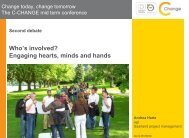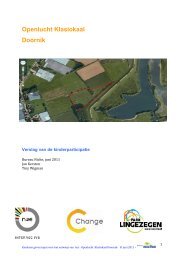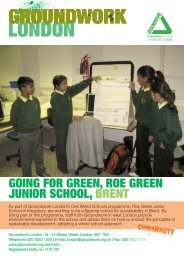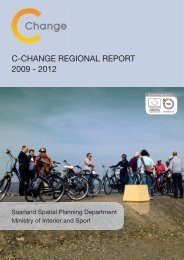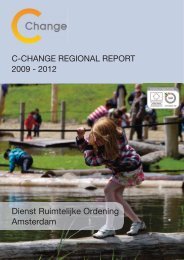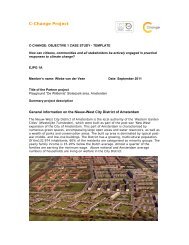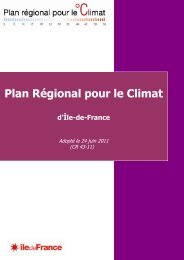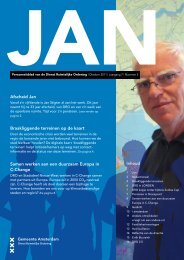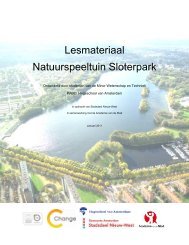Amsterdam 2040
Amsterdam 2040
Amsterdam 2040
- No tags were found...
You also want an ePaper? Increase the reach of your titles
YUMPU automatically turns print PDFs into web optimized ePapers that Google loves.
Debatingthe Future of<strong>Amsterdam</strong>by Barbara Ponteyn b.ponteyn@dro.amsterdam.nlThe Making ofthe StructuralVisionMore than ever before in <strong>Amsterdam</strong>’slong tradition of structural planning,the City Council wanted this StructuralVision to take shape in an open process.Citizens, businesses, organizations andother government bodies had to be giventhe opportunity to share their thoughtsand provide input throughout theprocess. The City Council had no desireto devise this vision on its own, seeingas it cannot realize the eventual outcomein isolation.The process of jointly devising a vision by consultationwas at least as important as the end product. Themaking of the structural vision took three years andconsisted of three phases: reconnaissance, integrationand ratification. Citizens and organizations wereinvolved in these phases in various ways. By contrastwith the previous structure plans, the formulation ofthe structural vision was managed as an integratedwhole – both bureaucratically and politically – withthe municipal departments involved in spatial mattersworking as a team and co-authoring the structuralvision. This brought the tasks facing the variousdisciplines into the equation.The great political engagement was terriblyimportant for the process. The coordinating alderman,Maarten van Poelgeest, was in attendance at a greatmany meetings and also entered into smaller-scalediscussions, with organizations such as the <strong>Amsterdam</strong>Centre for the Environment (Milieucentrum <strong>Amsterdam</strong>,or MCA), with students, allotment holders andthe citizens who participated in the public campaign.Reconnaissance: gathering expertiseand ideasDuring the first phase of the process (2008-2009) theemphasis was on the organization of the process anddetermining the important themes for the future ofthe city. To do this it was necessary to ‘gather’ theexpertise and ideas that are alive in the city, not only inorder to be working with the right information but alsoto arrive at a broadly shared outlook for the future.Citizens, the private sector, interest groups andplanning professionals were consulted in discussions,conferences and workshops. A ‘Memorandum ofStarting Points’ (Vertrekpuntennotitie) was drawnup prior to the dialogue, incorporating the basic120PLAN<strong>Amsterdam</strong>




